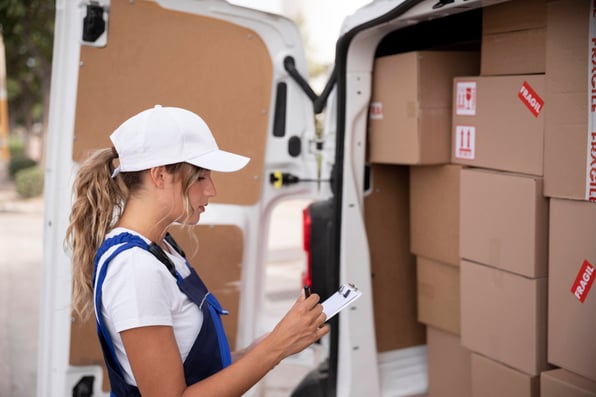
Enhancing Food Safety and Handling in Restaurants with CWMS
Ciprian Chiripuci

From foodborne illnesses to regulatory compliance, the stakes are high for restaurants. In recent years, collaborative work management systems have emerged as a game-changer in the restaurant industry. These digital tools enable restaurants to streamline their operations, enhance communication and ultimately, improve food safety and handling. In this article, we will explore how collaborative work management systems are transforming food safety in restaurants.
Collaborative Work Management Systems: A Brief Overview
Collaborative work management systems are digital platforms designed to facilitate teamwork, streamline processes and improve overall productivity. These systems often include features like task management, document sharing, real-time communication and workflow automation. In the context of food safety and handling, they offer a centralized hub for managing and monitoring critical processes.
Task Management
Imagine a busy restaurant kitchen where multiple tasks need to be executed flawlessly to ensure food safety. Collaborative work management systems provide a digital task list that kitchen staff can access in real-time. Tasks like checking food temperatures, cleaning utensils or labeling items for freshness can be assigned, tracked and completed efficiently.
Benefits:
- Efficiency: Tasks are assigned, completed and documented more efficiently, reducing risk of missed steps.
- Accountability: Each team member knows their responsibilities, ensuring that nothing falls through the cracks.
- Real-time Updates: Managers can monitor task progress in real-time, addressing issues promptly.
Document Management
Proper documentation is crucial for food safety and regulatory compliance. Collaborative work management systems allow restaurants to digitize and centralize important documents such as food safety protocols, training materials and inspection records.
Benefits:
- Accessibility: Documents are accessible to authorized personnel from anywhere, reducing reliance on physical paperwork.
- Version Control: Ensures that the most up-to-date documents are used, minimizing errors.
- Compliance: Simplifies compliance audits by providing a digital trail of documentation.
Communication
Effective communication is vital in a restaurant's fast-paced environment. Collaborative work management systems offer chat, messaging and notification features that enable quick and efficient communication among staff members.
Benefits:
- Instant Communication: Staff can quickly communicate issues related to food safety, such as reporting spills or equipment malfunctions.
- Cross-functional Collaboration: Enables collaboration between kitchen staff, servers and management for better coordination.
- Reduced Miscommunication: Minimizes the chances of misunderstandings that can lead to food safety issues.
Enhancing Food Safety: Benefits
Now that we've seen how collaborative work management systems work, let's explore the tangible benefits they bring to food safety and handling in restaurants.
-
Improved Compliance
Restaurants must adhere to strict food safety regulations. Collaborative work management systems assist in maintaining compliance by providing tools for documentation, training and task management. This reduces risk of non-compliance, which can lead to fines, closures and reputational damage.
-
Enhanced Training
Proper training is the cornerstone of food safety. Collaborative systems enable restaurants to create and deliver training materials efficiently. This ensures that all staff members are well-informed about food safety protocols, reducing the likelihood of errors.
-
Rapid Issue Resolution
When food safety issues arise, time is of the essence. Collaborative systems facilitate quick communication, allowing staff to report issues and managers to address them promptly. This can prevent minor issues from escalating into major incidents.
-
Data-Driven Decision-Making
Collaborative systems collect valuable data on food safety tasks, incidents and compliance. This data can be analyzed to identify trends, areas for improvement and potential risks. Informed decision-making is essential for long-term food safety.
-
Consistency Across Locations
Chain restaurants or franchises can benefit from standardizing food safety procedures across multiple locations using collaborative systems. This ensures a consistent level of food safety and handling across the brand.
Best Practices for Implementing Collaborative Work Management Systems
While collaborative work management systems offer significant advantages, successful implementation requires careful planning and execution. Here are some best practices to consider:
-
Assess Your Needs
Understand your restaurant's specific food safety and handling requirements before selecting a collaborative system. Not all systems offer the same features, so choose one that aligns with your needs. -
Provide Training
Ensure that all staff members are trained in using the collaborative system effectively. This includes proper use of task management, document sharing and communication features. -
Establish Clear Protocols
Define clear protocols and workflows for food safety tasks within the system. This ensures that everyone understands their role and responsibilities. -
Regularly Audit and Update
Continuously audit your processes and update them based on feedback and changing regulations. Collaborative systems make it easier to implement changes consistently. -
Foster a Culture of Food Safety
Encourage a culture of food safety and accountability within your restaurant. The collaborative system should be a tool that supports this culture.
Collaborative work management systems are revolutionizing food safety and handling in restaurants. By streamlining processes, enhancing communication and promoting accountability, these systems contribute to safer dining experiences and regulatory compliance. Whether you're a small local eatery or a large restaurant chain, embracing these digital tools can help you elevate food safety to new heights. So, consider integrating a collaborative work management system into your restaurant's operations and watch as it transforms your approach to food safety for the better. Your customers' health and your restaurant's reputation depend on it.
Related posts
Here are some resources to help you get more out of your assets


Ciprian Chiripuci
Truck Sealing in Delivery Logistics: Definition, Benefits and Best Practices

Ciprian Chiripuci
Mastering that Last Mile
READY TO TALK?